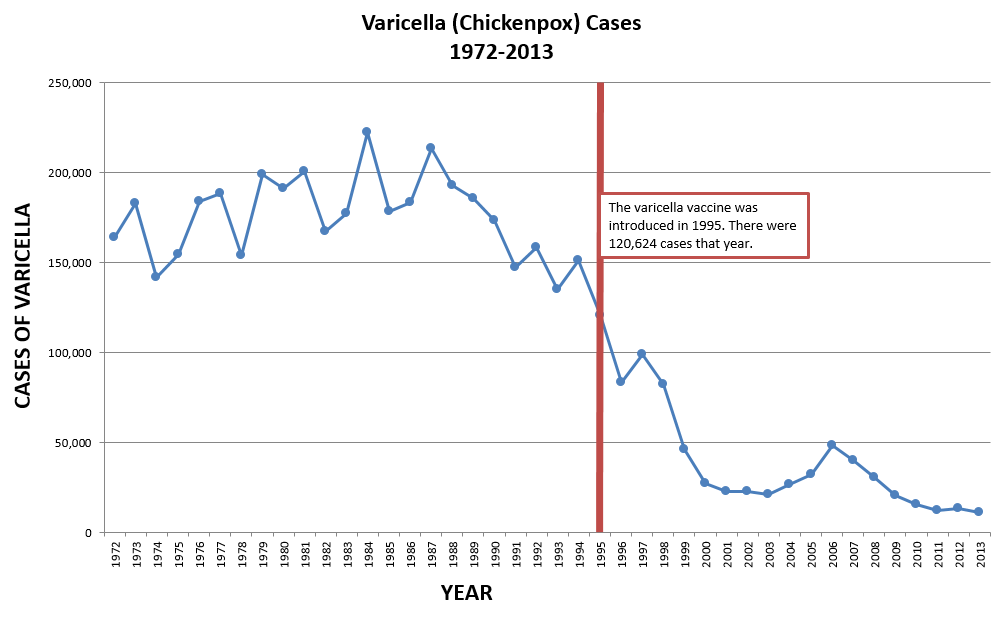History, Cases, Deaths, and Vaccination Rates
Varicella (chickenpox), according to the CDC, is “a very contagious disease caused by the varicella-zoster virus (VZV). It causes a blister-like rash, itching, tiredness, and fever.”

Source: Jon Lieff, “The Remarkable Intelligent Varicella Virus,” jonlieffmd.com, Feb. 23, 2014
In 1767, English doctor William Heberden first distinguished chickenpox (varicella) from smallpox (variola major and variola minor). In 1892, Hungarian pediatrics professor James Bokay wrote of the connection between chickenpox and later contraction of shingles; his theory was be proven correct in 1925 by K. Kundratitz. Thomas Weller first isolated the varicella virus in 1953. In 1974, Michiaki Takahashi attenutated (keeping the virus live but weakening it so that it is essentially harmless) the varicella virus, creating a vaccination. A version of that vaccine, Varivax, was licensed and used in the United States in 1995 and, as of June 25, 2014, remains the only varicella vaccination used in the United States.
The CDC recommends that children receive the first dose of the varicella vaccination between 12 and 18 months of age.



Sources
CDC, “Chickenpox (Varicella): Overview,” cdc.gov, Nov. 16, 2011
CDC, “Reported Cases and Deaths from Vaccine Preventable Diseases, United States, 1950-2013,” cdc.gov, Sep. 2014
CDC, “U.S. Vaccination Coverage Reported via NIS,” cdc.gov, Mar. 11, 2014
College of Physicians of Philadelphia, “The History of Vaccines: Timelines, Diseases and Vaccines,” historyofvaccines.org (accessed June 25, 2014)
| Measles Outbreak |
|---|
| Fighting Measles amid the COVID-19 Pandemic |
| US May Lose Measles Elimination Status Due to Ongoing Outbreaks |
| States Rethinking Childhood Vaccine Mandates during Measles Outbreak |


